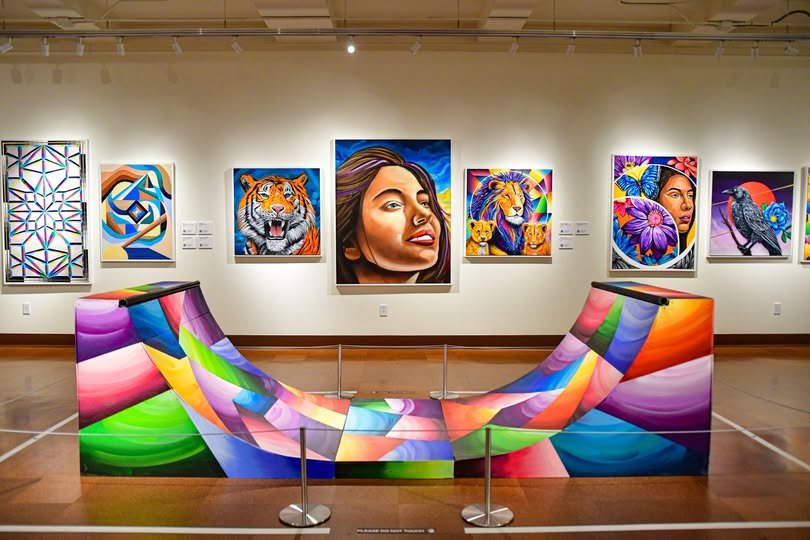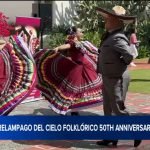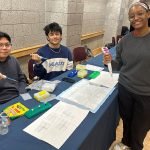By JAN McLAUGHLIN
BG Independent News
As a teenager growing up in Toledo, Chilly Rodriguez found a creative outlet in graffiti. Occasionally, his artwork would land him in jail.
Now his artwork has brought him national fame, an exhibit in the Toledo Museum of Art, and has transformed him into a community leader.
Rodriguez, who spoke at the Wood County District Public Library Thursday evening, referenced his “rough upbringing” and the release he discovered painting illegal structures.
But since his spray-painting start around age 14, Rodriguez has advanced from painting skateboards, to graffiti, to murals, to fine art. Nearly two decades later, he had a show in the Toledo Museum of Art – with a glance back to his early days.
“How cool it was to put a mini-ramp in the Toledo Museum of Art,” he said.
Rodriguez’s art can be found on many flat – or even curved – surfaces throughout the region. He was one of the artists who turned the towering grain silos on the Maumee River into a massive mural for Native Americans.
His smaller surfaces have included food trucks, businesses, motorcycles, and coffee sleeves. Right now he is painting a community center mural during the day and a bar at night.
“I’ll pretty much paint anything within reason,” Rodriguez said. He is particularly comfortable with big canvasses. “I’ve always painted bigger. It’s more natural for me.”

He may have reached his limit with the curved grain silos mural, which is the largest mural in the U.S., and the second largest in the world.
“I’m not sure you can go bigger than that,” he said. While Rodriguez is not fond of heights, he was able to paint 140-feet in the air with the lift swinging in the wind.
“I’m always up for a good challenge. If it’s daunting, I’ll figure out a way to do it,” he said.
In Bowling Green, his vibrant colors and images can be found on a barn at the Wood County Museum. His inspiration for that mural came from photographs he snapped of flowers, birds and butterflies in the nearby herb garden.

Rodriguez’s artwork is sought after by businesses, cities, neighborhoods and organizations.
But it wasn’t always that way. He failed his high school art classes, and self-taught himself aerosol artistry. In his early years, he was more likely to be referred to as a “scumbag skateboard teen.” His graffiti sometimes landed him in jail – assisted by his overuse of alcohol.
After losing his left hand to an incident with alcohol, Rodriguez has had seven years of sobriety.
“I got tired of being sick and tired,” he said. He shares his story with others at rehab centers.

“I always tell people, ‘If I can do it, you can do it.’ I know what these people have been through.”
Since then, Rodriguez has been challenging himself to broaden his artistic skills. He used to struggle with portraits, but now finds them very rewarding. “I like that they’re difficult.”
“I’m trying to find things that make me a little uncomfortable,” he said.
Rodriguez has found growth through traveling. Prior to Covid, he had never been further west than Chicago. Now he longs to see more places, more inspiration.
“Since then I’ve been traveling all over the country. I can’t stop.”
This year he has attended a mural festival in St. Louis, with two more planned this year in Memphis and Miami.

Rodriguez dreams big for this artwork – sometimes in smaller packages. He would love to work with a shoe company on sneaker art, and with another company on art for skateboards.
And he wants to share his success with others like him, who find art with aerosol cans. He and a buddy own the River East Gallery, and Rodriguez is scheduled to instruct a class on graffiti letters at the Toledo Museum of Art.
And above all, he wants to continue beautifying the world with public art.
“You can transform a space” for people who live there, he said. “I want to change the world, but I don’t know how to except through this.”
Rodriguez continues to ask businesses to donate walls for him to paint. His commitment to public art serves as a catalyst for positive change in his community. By revitalizing rundown spaces and bringing art to areas where it is needed, he demonstrates the impact that art can have on urban environments and the people who inhabit them.










